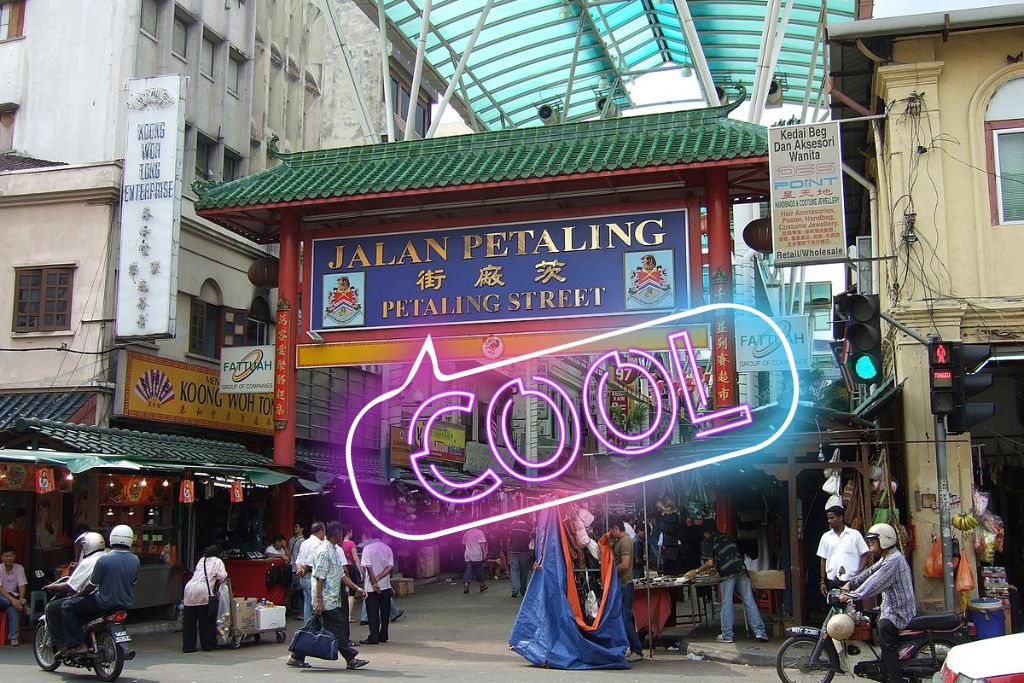The announcement of Borneo’s first high-speed bullet train network, dubbed the Trans-Borneo Railways (TBR), has captured imaginations. This ambitious project promises to revolutionize transportation across the vast island, but a closer look reveals a complex web of factors to consider before this dream becomes reality.

Promised Efficiency and Progress
The TBR boasts impressive specifications. Trains will zip between stations at an average speed of 300-350 km/h, connecting major cities with a journey time of just 30 minutes on average. The 1620 km track, divided into two phases, aims to bridge the economic powerhouses along the west coast and eventually reach the new Indonesian capital, Nusantara.
Economic Impact: A Double-Edged Sword
The economic benefits are undeniable. Faster travel times would stimulate trade, tourism, and investment. Businesses could establish regional hubs, leveraging efficient transportation for distribution. However, the colossal construction costs and long-term maintenance raise concerns. Who shoulders these burdens? Will ticket prices be affordable for the average resident, or will the TBR become an exclusive mode of travel?

Geographic Considerations: Engineering Marvel or Environmental Threat?
Borneo’s geography presents a significant challenge. Lush rainforests, mountainous regions, and delicate ecosystems lie along the proposed route. Building a high-speed railway through these areas necessitates extensive environmental impact assessments. Tunneling and land clearing could disrupt fragile ecosystems and displace indigenous communities. Sustainable construction practices and responsible land use planning will be crucial.
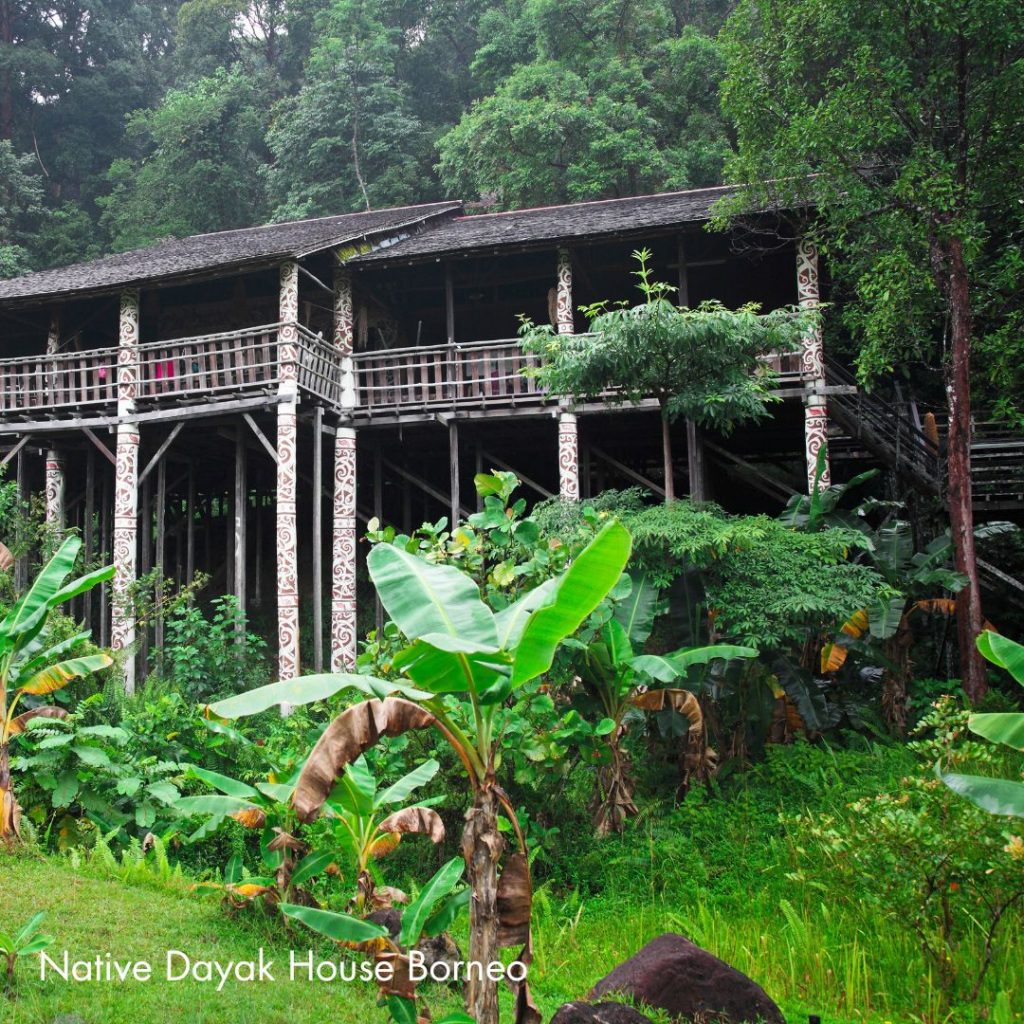
Demographic Impact: Bridging the Divide or Widening the Gap?
The TBR promises to connect major cities, but what about rural areas? While the project might create jobs during construction, the long-term operational workforce is likely to be concentrated in urban centers. Will this lead to further rural depopulation and exacerbate existing inequalities? Strategic planning for feeder lines and economic development initiatives in rural areas is essential to ensure the benefits are evenly distributed.
A Look at the Stations and Terminals
The TBR plans four main terminals serving as hubs, along with 24 stations scattered across the island. Here’s a breakdown of the proposed locations:
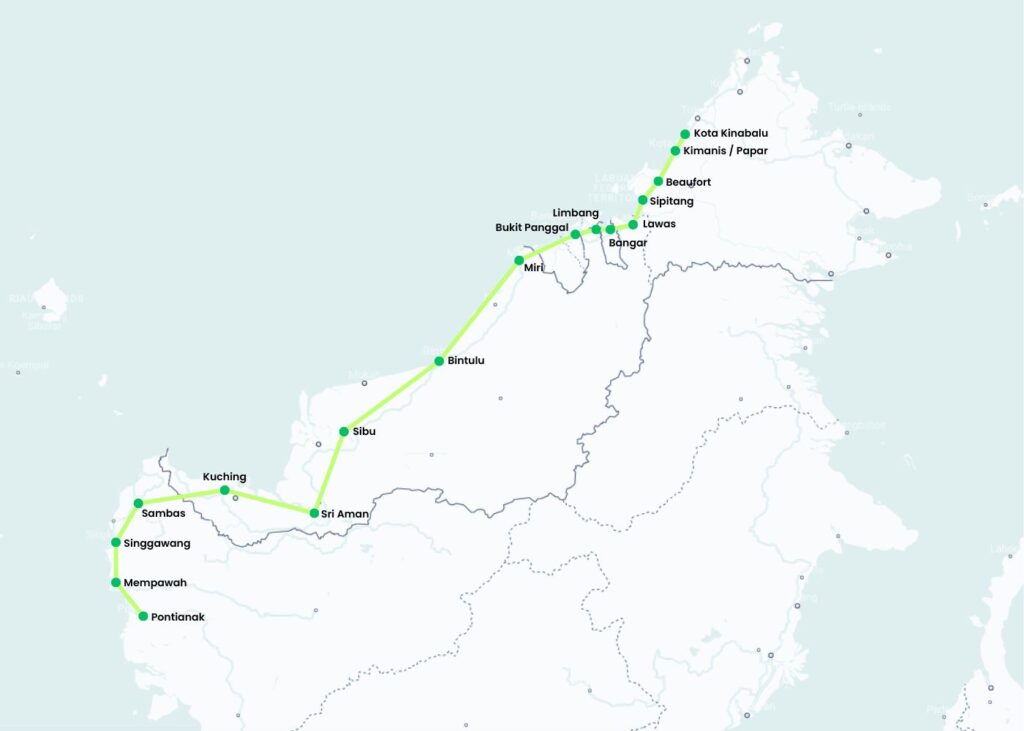
Phase One – Main Line
- Kota Kinabalu (Sabah)
- Kimanis/Papar
- Beaufort
- Sipitang
- Lawas
- Bangar
- Limbang
- Bukit Panggal
- Miri
- Bintulu
- Sibu
- Sri Aman
- Kuching (Sarawak)
- Sambas
- Singkawang
- Mempawah
- Pontianak (West Kalimantan)
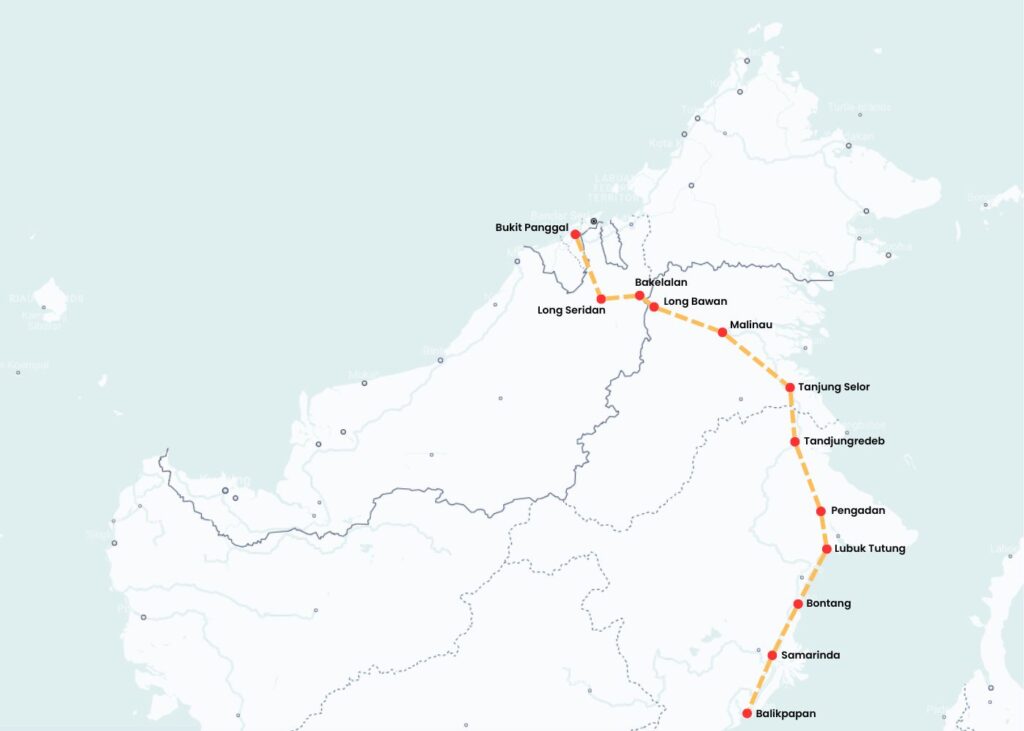
Phase Two
- Bukit Panggal
- Long Seridan
- Bekalalan
- Long Bawan
- Malinau
- Tanjung Selor
- Tandjungredeb
- Pengadan
- Lubuk Tutung
- Bontang
- Samarinda (East Kalimantan)
- Balikpapan (East Kalimantan)
The strategic placement of the Bruneian district of Tutong as the central hub is a nod to potential future cross-border connections.
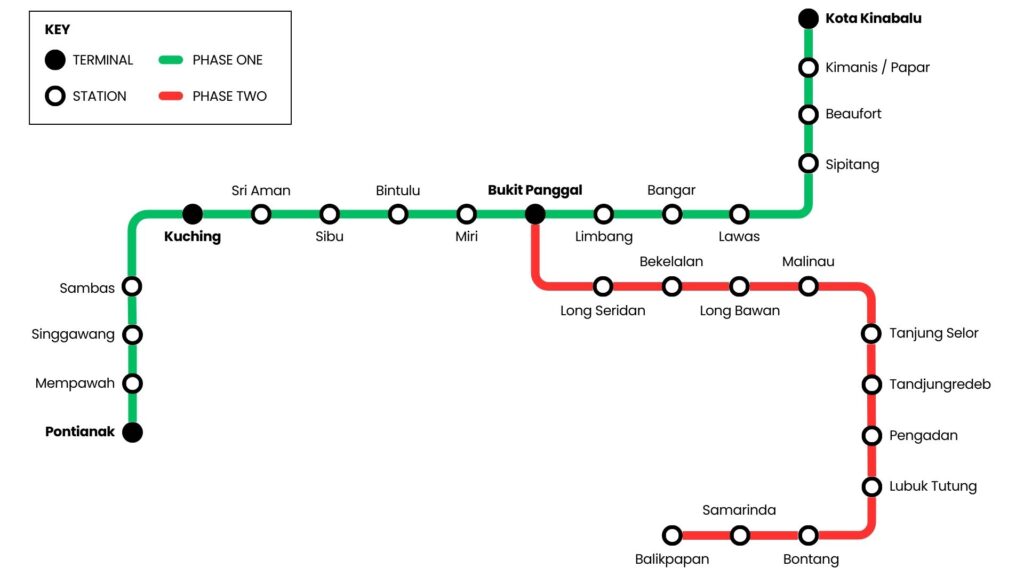
Conclusion: A Project with Potential, but Challenges Abound
The Trans-Borneo Railway has the potential to be a game-changer for Borneo. However, the economic, geographic, and demographic considerations cannot be ignored. A comprehensive feasibility study, transparent public discourse, and international collaboration are crucial for the TBR’s success. Only through careful planning and a commitment to sustainability can this high-speed dream become a reality that benefits all of Borneo’s inhabitants.
Sources: brunergyutama.com/our-project/


